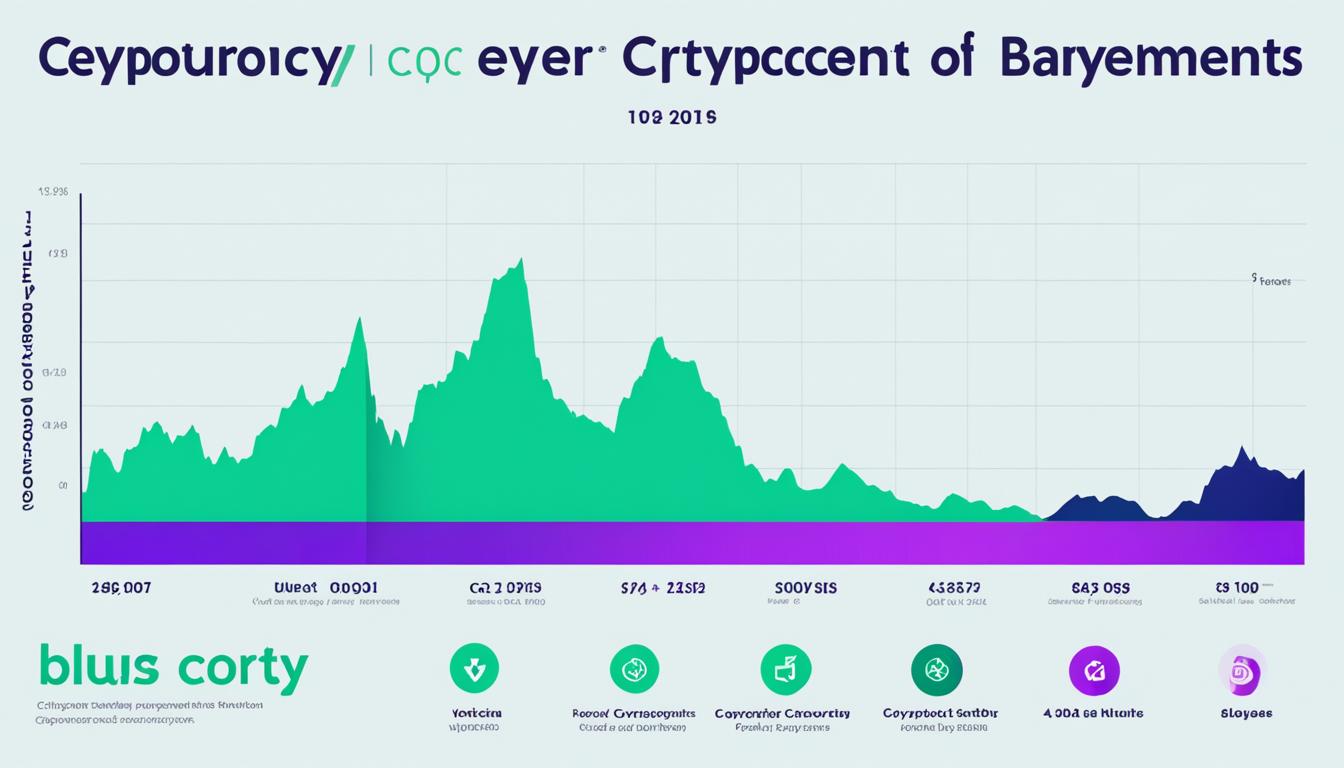In the past few years, cryptocurrencies have emerged as a powerful force in the global financial landscape. With the rise of Bitcoin and subsequent altcoins, the world has witnessed a digital revolution where individuals have gained unprecedented control over their finances, free from traditional banking systems and intermediaries. However, this new financial frontier has also raised concerns about its unregulated nature, leaving governments and regulatory bodies scrambling to formulate policies to protect investors and ensure the stability of the market. In this article, we will delve into the world of cryptocurrency regulation, exploring the current state of affairs and conducting a comparative analysis of global crypto regulations. From strict regulatory frameworks to more lenient approaches, we will examine how countries around the world are grappling with this disruptive technology and striving to strike a balance between innovation and investor protection. So, join us as we explore the intricate world of global crypto regulations.
With over 10,000 different cryptocurrencies in circulation and a market capitalization soaring above $2 trillion, the call for Global Crypto Regulations has never been louder. As a digital currency enthusiast, you’ve witnessed an unprecedented boom within the industry, highlighting the essential need for cryptocurrency laws to ensure market stability and investor protection. Nations worldwide are grappling with the development of international crypto regulations, each tailoring their regulatory frameworks for crypto to their economic environments while attempting to maintain a balance between blockchain compliance and innovation.
In your quest to demystify the complex landscape of digital currency rules, it becomes imperative to understand how varied government oversight of cryptocurrencies impacts the sector’s evolution. This intricate web of global compliance standards reflects an era of transformation as governments try to catch up with the rapid growth of a decentralized revolution.
This comparative analysis serves as your lens into how the world is adapting its legislative frameworks to the dynamic world of cryptocurrencies. As policies emerge and mature, they will indubitably shape the future of global finance and the potentiality of blockchain technology. Here, we dissect these developments, providing you with a panoramic view of this financial paradigm shift.
Contents
- 1 Understanding Cryptocurrency and Its Global Impact
- 2 Regulatory Theories and the Case for Oversight
- 3 Global Crypto Regulations: Diverse Approaches to Supervision
- 4 Legislative Landscape: Comparing International Crypto Regulations
- 5 Consumer Protection and Market Integrity in Crypto Transactions
- 6 FAQ
- 6.1 What is cryptocurrency regulation?
- 6.2 How does cryptocurrency impact the global economy?
- 6.3 What are the recent market dynamics and regulatory debates surrounding cryptocurrencies?
- 6.4 What are the key financial events that have prompted government oversight in the crypto market?
- 6.5 What are the regulatory theories behind cryptocurrency oversight?
- 6.6 Why is oversight necessary in the crypto market?
- 6.7 How do different countries approach cryptocurrency regulation?
- 6.8 What is the legislative landscape of international crypto regulations?
- 6.9 How are investors protected in crypto transactions?
- 6.10 What is the importance of anti-money laundering (AML) and know your customer (KYC) implementation in the crypto industry?
- 6.11 How effective are global compliance standards in maintaining a secure crypto market?
Key Takeaways
- The significant market cap of cryptocurrencies underscores the importance of robust global crypto regulations.
- Diverse international crypto regulations influence the stability and growth of the digital currency market.
- Understanding the variances in cryptocurrency laws is crucial for stakeholders in the blockchain industry.
- Government oversight of cryptocurrencies is evolving to address the complexities and risks of the digital economy.
- Blockchain compliance and global compliance standards serve as cornerstones for a secure and reliable crypto market.
- Regulatory frameworks for crypto are becoming critical in ensuring consumer protection and market integrity.
Understanding Cryptocurrency and Its Global Impact
As digital innovation forges ahead, cryptocurrency has established itself as a disruptive force with a significant global impact. This burgeoning sector encompasses both financial and technological advances that merit closer examination. To comprehend its broad-ranging effects, one must explore the nature of crypto assets, the evolving market dynamics, and the ensuing regulatory debates. Moreover, identifying financial events that trigger government oversight can provide insights into present and future regulatory landscapes.
Defining Crypto Assets and Their Economic Influence
Crypto assets represent a diverse range of digital currencies and tokens, operating on blockchain technology to ensure security and decentralization. Their economic influence has penetrated sectors far beyond finance, including healthcare, real estate, and logistics, showcasing the versatile applications of cryptocurrency. The ripple effect of these digital assets’ adoption spurs both innovation and challenges in equal measure.
Recent Market Dynamics and Regulatory Debates
The market dynamics of cryptocurrency are characterized by volatility and rapid growth. This environment perpetually stokes regulatory debates that converge on consumer protection, market integrity, and the prevention of financial crimes. Government oversight, although varying greatly across different jurisdictions, strives to find a balance between fostering innovation and curtailing risks.
Key Financial Events Prompting Government Oversight
Several critical financial events have underscored the need for heightened government oversight within the cryptocurrency landscape. These include major exchange hacks, the proliferation of initial coin offerings (ICOs), and concerns over money laundering and other illicit activities. Such events provoke responses ranging from cautious scrutiny to full-blown regulatory measures intended to safeguard participants in the crypto ecosystem.
| Financial Event | Impact on Crypto Assets | Government Response |
|---|---|---|
| Exchange Hacks | Loss of investor confidence, market instability | Enhanced security regulations, oversight of crypto exchanges |
| Initial Coin Offerings (ICOs) | Capital raising innovation, potential for fraud | Securities regulations, investor protection protocols |
| Money Laundering Concerns | Necessity for anonymous transactions scrutiny | Implementation of AML/KYC standards for transactions |
In the world of cryptocurrency, one thing remains clear: the impact on global financial systems and market operations is undeniable. Through government oversight and public discourse, the regulation of crypto assets must adapt to ensure a stable yet innovative future for digital currencies. Your understanding of these elements is pivotal in navigating the crypto space with astuteness and foresight.
Regulatory Theories and the Case for Oversight
As the digital frontier expands, the conversation around regulatory theories and the case for oversight in cryptocurrency becomes increasingly pertinent. To navigate the complexities of cryptocurrency regulation, it is integral to examine the foundation upon which these regulations stand. Theories of regulation serve as a guide, facilitating a structured approach to governance and enforcement in the crypto sphere.
Regulatory theories typically address the rationale behind oversight, the objectives of such actions, and the expected outcomes. Within the context of cryptocurrencies, these theories must reconcile the tenets of financial stability, consumer protection, and innovation. The intricate relationship between regulation and market behavior emerges as a focal point, underscoring the need for a balanced approach.

In constructing a case for oversight, one cannot overlook the potential repercussions of an unregulated market. High-profile security breaches, market manipulation, and illicit transactions carve out a clear exigency for establishing robust regulatory frameworks. The table below contrasts two predominant regulatory theories as they relate to cryptocurrency markets:
| Regulatory Theory | Key Tenets | Application to Cryptocurrency |
|---|---|---|
| Public Interest Theory | Regulation serves the public good by correcting market failures and protecting consumers. | Ensures crypto markets remain fair and transparent, with measures to safeguard against fraud and systemic risks. |
| Capture Theory | Regulation is often directed by the industry’s interests rather than the public’s, potentially leading to regulatory capture. | Proactively identifies and mitigates potential conflicts of interest, fostering a balanced ecosystem that accounts for stakeholder needs. |
Exploring these regulatory theories unveils an extensive spectrum of strategies, where each framework has its merits and caveats in the dynamic domain of digital currencies. The intricate dance between leveraging oversight for public welfare and facilitating a thriving, innovative market positions cryptocurrency regulation as a critical arena for contemporary policy discourse. Your understanding of the various dimensions of regulatory theories and their practical interpretations will inform your perspective on the emerging paradigm of digital assets.
Global Crypto Regulations: Diverse Approaches to Supervision
As the world grapples with the rise of digital currencies, global crypto regulations are evolving through diverse approaches with different regions exercising unique forms of supervision. This intricate tapestry reflects the complex interface between fostering innovation and ensuring protection for participants within the cryptocurrency landscape.

United States: A Stance on Innovation and Protection
In the United States, balancing the thriving force of innovation with the imperative of consumer and investor protection has been central to its regulatory posture. Recognizing the potential of blockchain technologies, U.S. agencies are taking a considered approach, one that does not stifle creativity yet places guardrails to safeguard market integrity.
European Union: Toward Standardized Crypto Policies
Across the Atlantic, the European Union is charting a course towards the implementation of standardized policies for crypto assets. This unified approach intends to harmonize regulation across member states, fostering an environment of clarity and predictability that could enhance the region’s attractiveness as a crypto hub.
Asia’s Varied Perspectives: Japan, China, and South Korea
Asia’s approach to cryptocurrency regulation is a testament to the continent’s diversity. Japan has emerged as a leader in embracing cryptocurrencies, with a regulatory regime that promotes both innovation and consumer protection. Conversely, China has taken a more cautious stance, enacting stringent measures aimed at overseeing the growth of digital currencies. South Korea, meanwhile, is refining its regulatory framework to balance the economic potential of blockchain with the need for overseen market practices.
Understanding these diverse approaches to global crypto regulations is essential for stakeholders navigating this dynamic domain. While regions like the United States and the European Union lean towards fostering innovation and drafting standardized policies, countries in Asia reflect a spectrum of strategies, each reflective of their unique economic landscapes and cultural attitudes towards financial oversight.
Legislative Landscape: Comparing International Crypto Regulations
As the digital economy expands, the legislative landscape of international crypto regulations becomes increasingly vital for maintaining global financial stability. In this comparative analysis, the complexities of different country regulations are explored to highlight how they align, or differ, from emerging global compliance standards.

Consistent regulatory approaches are pivotal for protecting investors and ensuring fair markets. The intricate web of global finance demands that international crypto regulations establish a balance between innovation, consumer protection, and systemic risk. Hence, a comparative analysis of these regulations is not only beneficial but necessary for stakeholders navigating the legislative nuances around the world.
| Country | Regulatory Framework | Compliance with Global Standards |
|---|---|---|
| United States | Focus on security and taxation, evolving stance on blockchain technology. | Robust AML and KYC regulations aligning with global compliance. |
| European Union | Development of Markets in Crypto-Assets (MiCA) for uniformity in the crypto market. | High; aims for harmonization along international lines. |
| Japan | Crypto Exchanges regulated under Payment Services Act for investor protection. | Strong focus on security and consumer protection, mirroring global trends. |
| South Korea | Real-name account trading system to prevent money laundering. | Moderate; local regulations with a gradual adaptation to global standards. |
| Switzerland | Liberal regulatory environment with a comprehensive legal framework. | High; pioneering regulatory clarity aligns with global mandates. |
Understanding the legislative landscape provides valuable insights into how countries perceive the risks and opportunities associated with cryptocurrencies. More importantly, this knowledge helps identify whether these nations are meeting or even setting global compliance standards. Decision-makers and investors can use this information to navigate the international crypto regulations with greater confidence and foresight.
Consumer Protection and Market Integrity in Crypto Transactions
In the digital age where cryptocurrency transactions are becoming ubiquitous, it’s crucial for you, as a participant in the crypto space, to understand how regulatory measures play a pivotal role in ensuring consumer protection and upholding market integrity. The financial liberty offered by cryptocurrencies comes with significant risks, hence global compliance standards are established to safeguard the interests of investors and maintain fair trading practices.
Protecting Investors: Regulatory Measures and Challenges
Protecting investors in the volatile realm of crypto transactions is no small feat. Regulatory bodies across the globe focus on developing measures to shield individuals from fraudulent schemes and the erratic nature of digital currency markets. However, challenges arise given the decentralized nature of these assets. The balance between fostering innovation and ensuring investor safety is delicate, and regulatory frameworks must adapt continuously to protect you and your investments without stifling the growth of this burgeoning industry.
Ensuring Market Integrity: From AML to KYC Implementation
To ensure the integrity of markets within the crypto ecosystem, Anti-Money Laundering (AML) and Know Your Customer (KYC) protocols are critical. These regulatory measures are tools to prevent financial malpractices, such as money laundering and terrorist financing. As you engage in crypto transactions, these protocols also serve to verify the identities of individuals involved, creating a more transparent environment where trust is paramount. While the implementation of these measures can be complex, their role in preserving market integrity cannot be overstated.
Global Compliance Standards and Their Effectiveness
The success of global compliance standards in creating a secure and dependable marketplace for cryptocurrency transactions largely depends on cooperation and enforcement across different jurisdictions. Your confidence in the crypto market, to a large extent, hinges on these standards, making their effectiveness crucial. Although perfect alignment across borders remains a challenge, strides have been made toward harmonizing regulatory practices, thereby enhancing protection for consumers like you and fortifying the market’s overall structure.









Leave a Reply